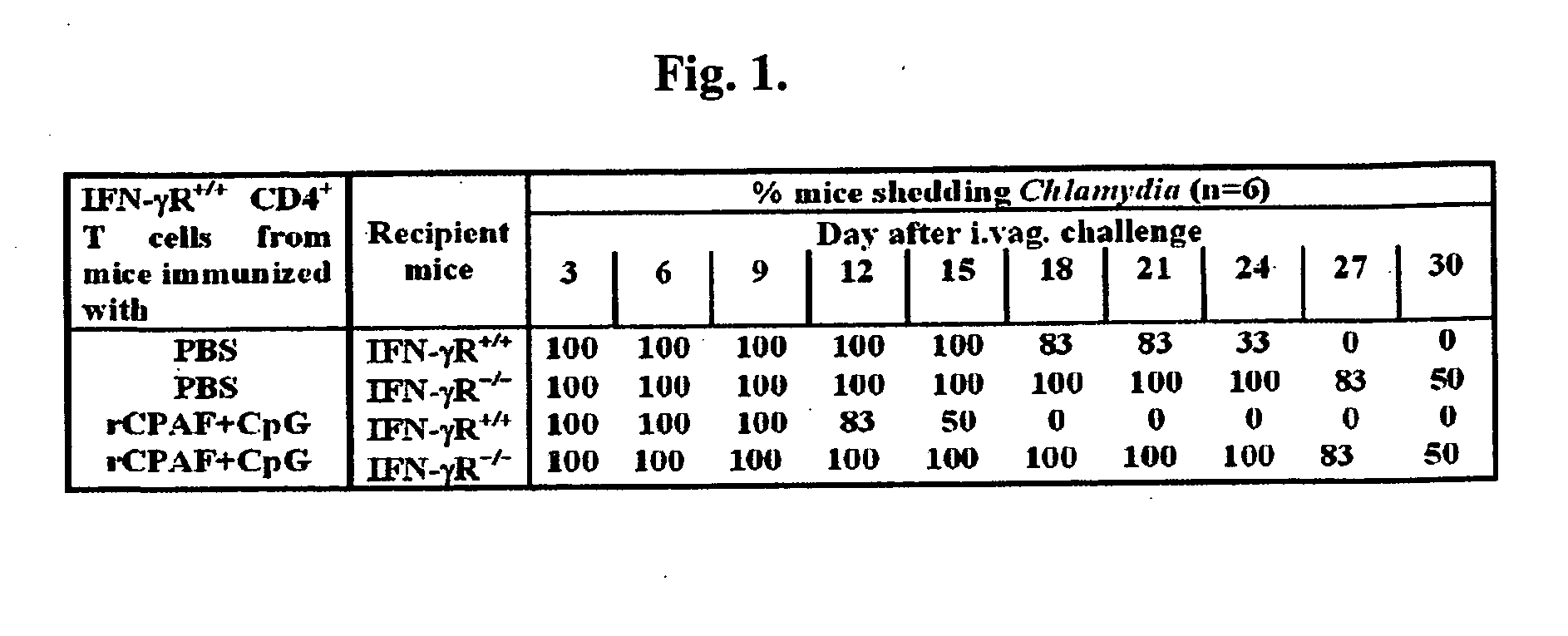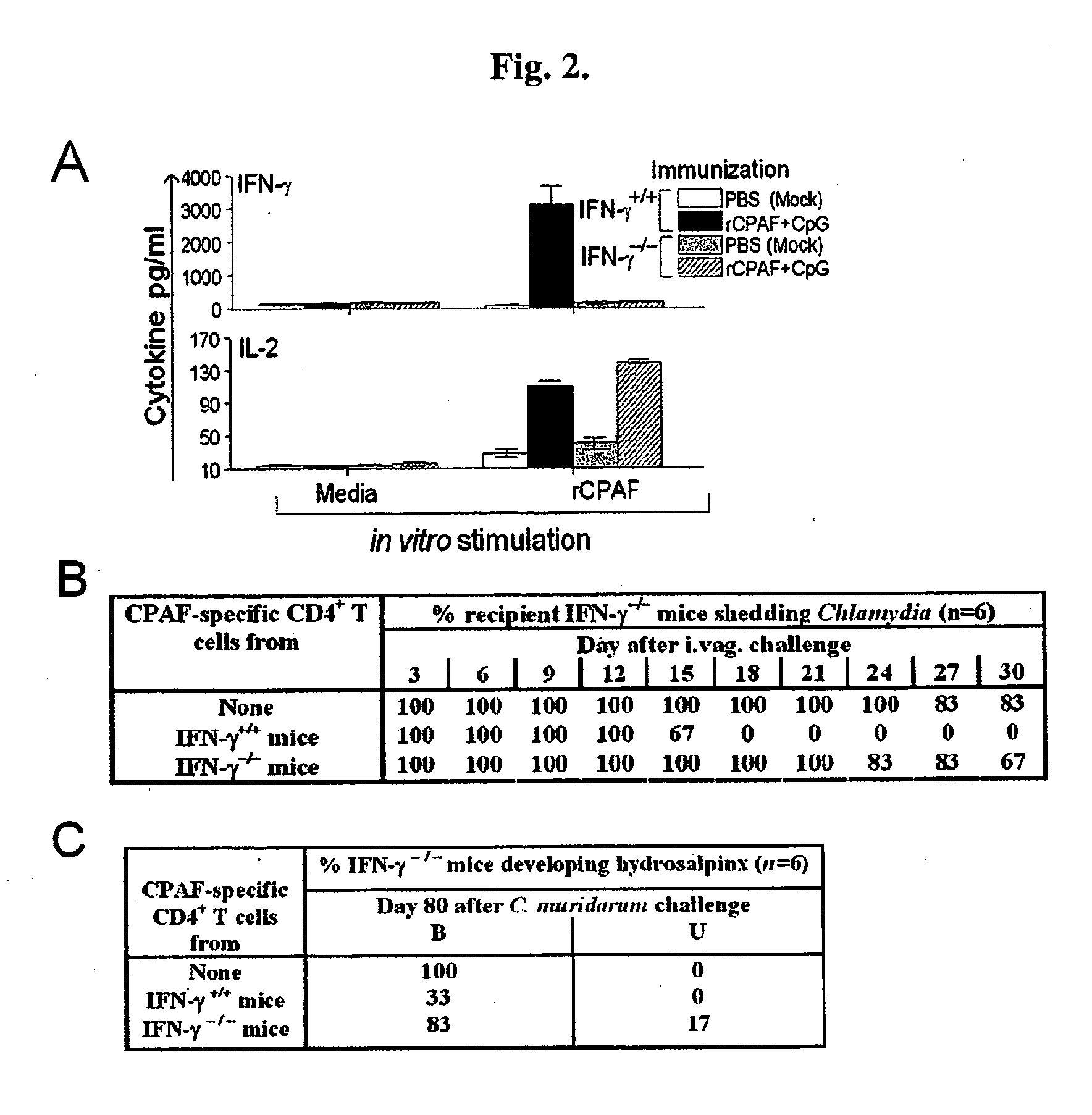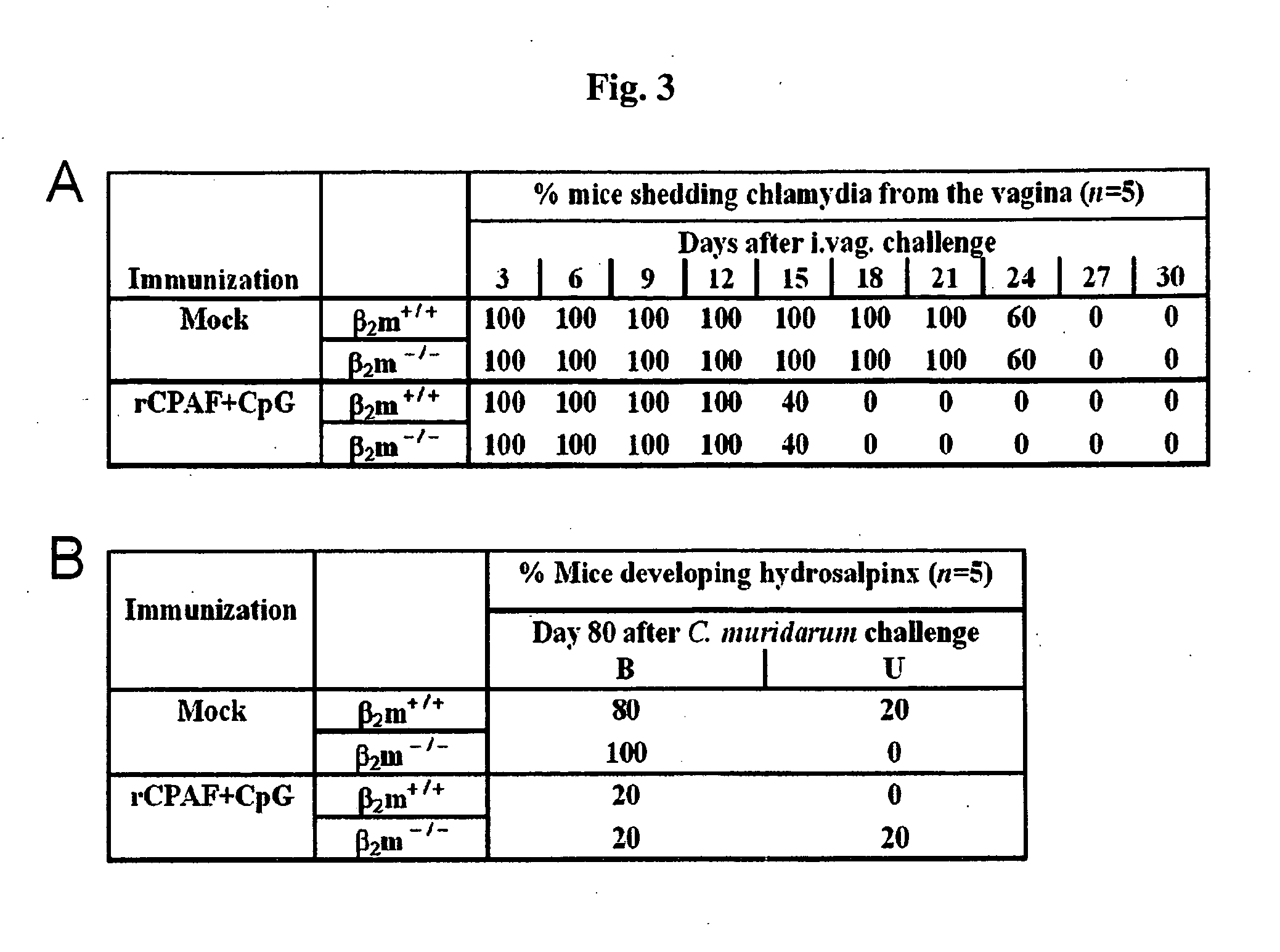Methods and compositions for immunization against chlamydial infection and disease
a technology of chlamydia and composition, applied in the field of treatment/prevention of chlamydia infection and disease, to achieve the effect of reducing the incidence of hydrosalpinx
- Summary
- Abstract
- Description
- Claims
- Application Information
AI Technical Summary
Benefits of technology
Problems solved by technology
Method used
Image
Examples
example 1
Chlamydial Protease-Like Activity Factor Induces Protective Immunity Against Genital Chlamydial Infection in Humanized HLA-DR4 Transgenic Mice
[0118]Bacteria. Chlamydia trachomatis mouse pneumonitis (MoPn; recently designated as the separate species C. muridarum) was grown on confluent HeLa cell monolayers. The cells were lysed using a sonicator (Fisher, Pittsburgh, Pa.) and the elementary bodies (EBs) were purified on Renograffin gradients as described (9, 14). Aliquots of bacteria were stored at −70° C. in Sucrose-Phosphate-Glutamine (SPG) buffer. Chlamydia genus-specific murine monoclonal antibody was used to confirm the identity of the purified bacterium (9).
[0119]Mice. HLA-DRA-IEα / HLA-DRB1*0401-IEβ tg mice were generated and backcrossed to MHC class II-deficient mice (MHC IIΔ / Δ mice) to eliminate any effect of endogenous MHC class II proteins, as described previously (5). The MHC IIΔ / Δ mice were generated by complete deletion of the H2-Aa, H2-Eb1 and H2-Eb2 genes and bred to C57...
example 2
The Protective Efficacy of Chlamydial Protease-Like Activity Factor Vaccination is Dependent Upon CD4+ T Cells
[0134]Mice. Female 4-8 week old C57BL / 6 mice were purchased from Simonsen Laboratories (Gilroy, Calif.) and maintained at the University of Texas at San Antonio Animal Facility. Mice were given food and water ad libitum and all animal procedures were performed in compliance with the Institutional Animal Care and Use Committee (IACUC) guidelines.
[0135]Bacteria. Chlamydia trachomatis mouse pneumonitis (MoPn; recently designated as the separate species C. muridarum) was grown on confluent HeLa cell monolayers. The cells were lysed using a sonicator (Fisher, Pittsburgh, Pa.) and the elementary bodies (EBs) were purified on Renograffin gradients as described previously (14). Aliquots of bacteria were stored at −70° C. in Sucrose-Phosphate-Glutamine (SPG) buffer. Chlamydia genus-specific murine monoclonal antibody was used to confirm the identity of the purified bacterium (9).
[013...
example 3
Intranasal Vaccination with a Secreted Chlamydial Protein Enhances Resolution of Genital Chlamydia muridarum Infection, Protects against Oviduct Pathology and is Highly Dependent Upon Endogenous IFN-Production
[0150]Recombinant CPAF (rCPAF) and IL-12. rCPAF from the C. trachomatis L2 genome was cloned and expressed in a bacterial system as described previously (3). Briefly, rCPAF constructs cloned from the C. trachomatis L2 genome with a 6-Histidine tag (His) were cloned into pBAD vectors and expressed in Escherichia coli with isopropyl-β-D-thiogalactopyranoside (IPTG) as an inducer. The fusion protein was purified using Ni-NTA agarose beads (Amersham Biosciences Corp.). The purified rCPAF was identified by Western blot analysis using a monoclonal anti-CPAF antibody (49). CPAF activity was determined by the ability to degrade the transcription factor RFX-5 in a concentration-dependent fashion, using a cell-free degradation assay, as described previously (13). The purified rCPAF was u...
PUM
 Login to View More
Login to View More Abstract
Description
Claims
Application Information
 Login to View More
Login to View More - R&D
- Intellectual Property
- Life Sciences
- Materials
- Tech Scout
- Unparalleled Data Quality
- Higher Quality Content
- 60% Fewer Hallucinations
Browse by: Latest US Patents, China's latest patents, Technical Efficacy Thesaurus, Application Domain, Technology Topic, Popular Technical Reports.
© 2025 PatSnap. All rights reserved.Legal|Privacy policy|Modern Slavery Act Transparency Statement|Sitemap|About US| Contact US: help@patsnap.com



